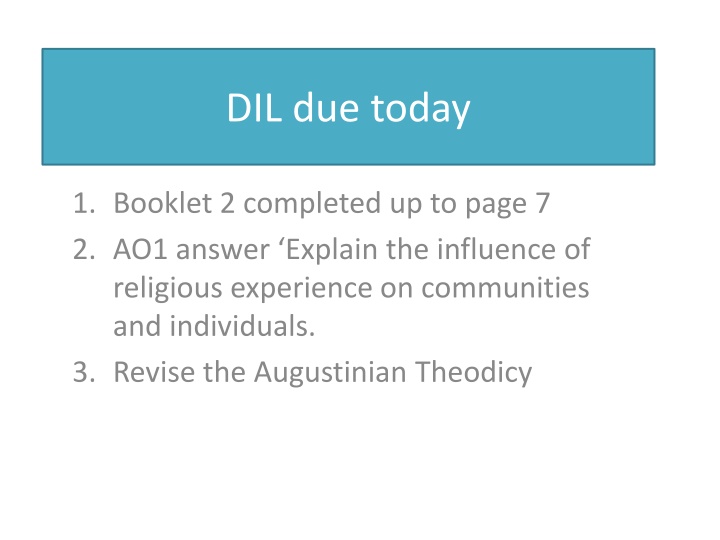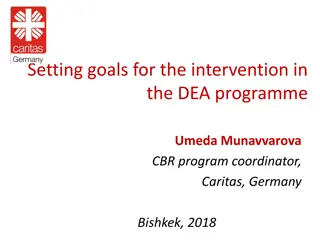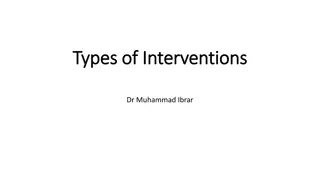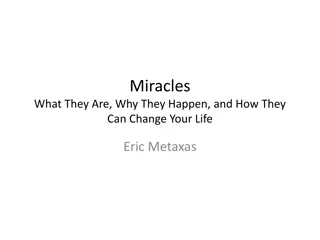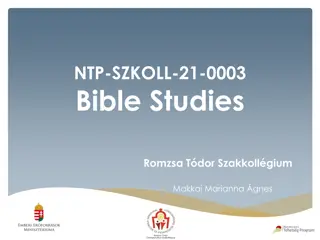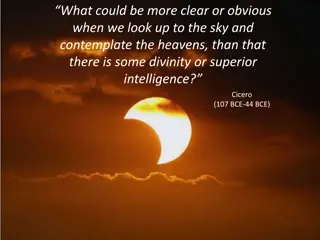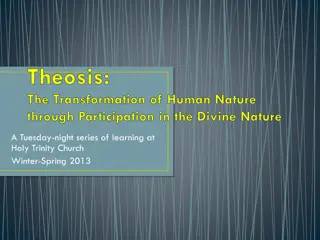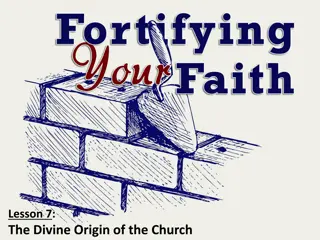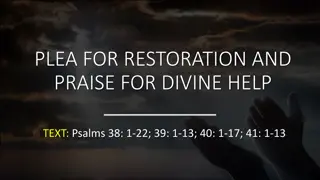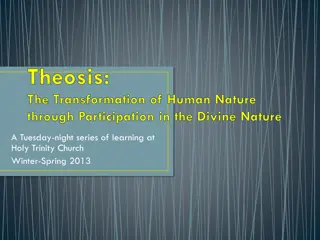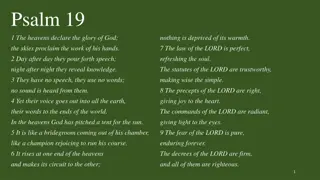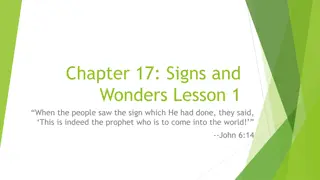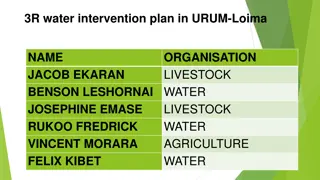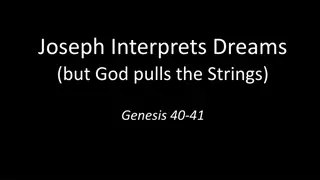Contemplating Miracles and Divine Intervention
Exploring the concept of miracles through various scenarios, ranging from unexpected events to profound healings, and pondering whether they are mere coincidences or extraordinary interventions from a higher power. From gospel singers escaping a fire to medical marvels and apparitions, these accounts prompt reflection on the role of faith in interpreting the extraordinary in everyday life.
Download Presentation

Please find below an Image/Link to download the presentation.
The content on the website is provided AS IS for your information and personal use only. It may not be sold, licensed, or shared on other websites without obtaining consent from the author.If you encounter any issues during the download, it is possible that the publisher has removed the file from their server.
You are allowed to download the files provided on this website for personal or commercial use, subject to the condition that they are used lawfully. All files are the property of their respective owners.
The content on the website is provided AS IS for your information and personal use only. It may not be sold, licensed, or shared on other websites without obtaining consent from the author.
E N D
Presentation Transcript
DIL due today 1. Booklet 2 completed up to page 7 2. AO1 answer Explain the influence of religious experience on communities and individuals. 3. Revise the Augustinian Theodicy
What is a miracle? Fun Fact! Miracle comes from Latin miraculum meaning an object of wonder.
Miracles I believe in miracles What is a miracle? Think, pair and share For a religious believer, a miracle is something that reveals the existence of God. Although many people use the term miracle to describe nothing more than a welcome or surprising occurrence, or a special event such as the birth of a baby, religious believers use the term to refer to something much more significant.
Miracle, Coincidence or both? 1. A bus full of gospel singers on their way to practice in the community hall gets delayed at a car crash. They usually meet every week at 7.15pm. They did not arrive this particular time until 7.27pm. When they arrived the community hall is up in flames. A gas leak exploded at 7.14pm. Miracle or coincidence? 4. A lady is told she will never have children. The consultants tell her to consider adoption as IVF has failed 3 times. 5 months later the lady discovers she is pregnant. She carries the baby to full term and 14 months following her meeting in the hospital she delivers a healthy baby girl. Miracle or coincidence? 2. Simon is told he has learning difficulties and he will always find reading a challenge. The head teacher of his school suggests to Simons parents that they send him to a special school. His parents refuse to move Simon as they want him to attend a mainstream school and be treated as an equal. Throughout his time at school teachers and other students put him down. Simon works hard and achieves 5 A-C Grades incl. English and Maths. Miracle or coincidence? 5. A terminally ill man is told that he has 4 months to live. The man wants to fight for life. He decides to visit Medjugorje on pilgrimage. On his return to England he goes for his regular check up with his consultant. The cancer is gone. No traces left of it. It seems to the consultancy team that it has mysteriously disappeared. Miracle or coincidence? 3. Jesus made the disciples get into the boat and go on ahead of him to the other side, while he dismissed the crowd. After he had dismissed them, he went up on a mountainside by himself to pray. Later that night, he was there alone, and the boat was already a considerable distance from land, buffeted by the waves because the wind was against it.Shortly before dawn Jesus went out to them, walking on the lake. When the disciples saw him walking on the lake, they were terrified. It s a ghost, they said, and cried out in fear. But Jesus immediately said to them: Take courage! It is I. Don t be afraid. Miracle or coincidence? 6. Virgin Mary Appears in Florida. In 1996 a black glass building in Florida became emblazoned with the outline of the Virgin Mary in the glass. The image was rainbow colored and was on the Seminole Finance building in Clearwater. The size of the image was approximately 33 feet high and 48 feet wide. Over 450,000 people have visited the site so far. Some have left flowers or candles and statues. In 1997 vandals thought that they would deface the image and threw an unknown liquid at it causing a stain on it. There were two days of heavy rain and afterwards the image had fully recovered. Miracle or Coincidence? Virgin Mary in Florida
Task You are going to write an answer to the AO1 question Explain different understandings of miracles. You will write a paragraph after we have studied each scholar. It must include key terms, examples and relevant quotes. Start with an introduction that defines miracles.
Definitions of miracle: 1. St Thomas Aquinas (miracles different from the usual order), 2. David Hume (transgression of a law of nature), 3. R.F. Holland (contingency miracle), 4. Richard Swinburne (religious significance).
Aquinas can you work out his definition He defined miracle as: That which has a divine cause, not that whose cause a human person fails to understand (from Summa Contra Gentiles). Learn it!
What does Aquinas say of miracles? His definition of miracles is as those things done by divine power apart from the order usually followed in things . He believed that everything that existed had a nature, i.e. the things that it is able to do. A miracle is an event beyond the natural power of any created being. It has a divine cause and so is not a normal part of the nature of things. God alone can do miracles since he is uncreated.
Aquinas identified 3 types of miracle: An event done by God which nature could not do could be said to be the most traditional approach. They are acts that contradict our regular experience. Aquinas uses the example of the reversal of the course of the sun. An event done by God which nature could do, but not in this order such as recovering from paralysis or a terminal illness. Its possible for these things to happen but it is not usually expected, and so could be attributed to the direct intervention of God. An event done which nature could do but without using the principles or forces of nature. For example, recovering from a cold more quickly than usual perhaps because someone prayed for this, and then it might be called a miraculous intervention of God.
What does Aquinas say of miracles? This allowed for a range of possible events, which we could call miracles. This also did not limit a miracle to a violation of a natural law and so is therefore, primarily identified by Gods intervention. A miracle is an act of God, which is beneficial to the recipient, which may break a natural law but does not necessarily have to. Add a paragraph on Aquinas to your essay Include His definition, including a quote His three types and an example of each type
Hume Transgression of a law of nature Violation (transgression) of the laws of nature performed by the particular volition of Deity, or the interposition of some invisible agent A miracle not only had to be an event that broke the laws of nature but also had to express divine cause The concept that certain actions will produce certain consequences, based on the scientific observation of nature Laws of nature rely on past experience to tell us how the natural world operates: they summarise what has been found to happen in the past An example would be raising a person from the dead. Why? Walking on water
So what is a law of nature? The concept that certain actions will produce certain consequences, based on the scientific observation of nature Laws of nature rely on past experience to tell us how the natural world operates: they summarise what has been found to happen in the past
Laws of nature Hard interpretation Laws of nature are unalterably uniform. If miracles are a violation of what cannot be altered then they are impossible. Or, what appears to be a violation is a misstated law and a new law of nature is needed. Soft interpretation Natural laws are not fixed and can have exceptions e.g. due to God s interventions. This makes the issue of belief in miracles not about logical impossibility but about whether the evidence for the altered law is credible and convincing
Swinburne If He (God) has reason to interact with us, He has reason very occasionally to intervene and suspend those natural laws by which our life is controlled Swinburne acknowledges that it is difficult to outweigh the scientific evidence, but that we do have enough historical evidence to suggest that there is a God and that God can violate the laws of nature. It is perfectly probable that there could be one off exceptional and unrepeatable occurrences. The laws of nature do not have to be rewritten. If God is omnipotent, then he quite clearly could suspend the laws of nature although not too often as this will interfere with scientific progress and free will.
Swinburne Two significant changes to Hume s definition. 1. Swinburne rejects the phrase a violation of a law of nature and uses an occurrence of a non- repeatable counter-instance to a law of nature . By this, he meant that given a law of nature(L), suppose an event (E) happens, i.e. a counter instance. Then it is not possible that E could be predicted by replacing the law L with a more successful law. If a law was modified to explain E it could not longer explain other events. Whereas if L is left it will adequately explain other events.
Swinburne 2. Miracles have a deeper significance than just breaking a law of nature. To be a miracle an event must contribute significantly towards a holy divine purpose for the world. Feather example Miracles must be seen as signs from God. The word sign is used in John s Gospel to refer to Jesus miracles which always seen to point to something beyond the actual event. Miracles are not seen as an end it themselves.
Swinburne We rely on the evidence of senses and perception to give us information about the world, why do we not rely on the evidence and the testimony of those claiming miracle. Swinburne also recognises the problem that God s intervention would have on human freedom which is why he argues that God doesn t intervene too often The Principle of Credulity: If it seems that X is present, then probably x is present. In short what one seems to perceive is probably the case (It is a principle of rationality). He puts the onus on the sceptic to disprove religious experience otherwise it should be taken at face value. The Principle of Testimony: In the absent of special consideration it is reasonable to believe that the experiences of others are probably as they report them. In other words you should believe other people as well.
Richard Swinburnes definition of miracles Add a paragraph on Swinburne - include Swinburne s two changes to Hume? 1. Non repeatable counter instance don t change the law 2. Significance Richard Swinburne s examples of violation of the laws of nature taken from the Bible: Levitation and resurrection from the dead in full health of a man whose heart has not been beating for twenty four hours and who was dead also by other currently used criteria; water turning into wine without the assistance of chemical apparatus or catalysts; a man getting better from polio in a minute. Richard Swinburne (ed.), Miracles, 1989 Why did Richard Swinburne regard turning water into wine, and other similar miracles recorded in the Bible, as a violation of the laws of nature? Bonus points How can Swinburne s Principles of Credulity and Testimony support his claim that miracles can occur?
R.F. Holland (contingency miracle), Holland s definition does not involve a break in the law of nature a coincidence can be taken religiously as a sign and called a miracle . What is a called a miracle is all down to interpretation. A miracle can only be spoken about against a religious background where the miracle is taken as a sign. Contingency miracle: a remarkable and beneficial coincidence that is interpreted in a religious fashion.
Hollands example Imagine a child has been saved from being hit by a train due to a series of events that can be explained, even though they may be extraordinary events. Suppose that the mother says it is a miracle. Holland says that this can be termed a miracle because it is the mother s interpretation of it. Others, in a similar vein, will say that God could indeed have acted through the laws of nature to bring about this series of coincidences .
AO1 and AO2 Reasons to believe in miracles Several reasons are put forward by philosophers and theologians as to why miracles should be accepted as evidence of the existence of God. These include: The theologian, Charles H. Dodd, considers A miracle is not so much a breach of the laws of nature, but rather a remarkable or exceptional occurrence which brought an undeniable sense of the presence and power of God. A miracle may be seen as an event that is caused by an everlasting or timeless God; this is either in accordance with natural laws or brought about by another person. A miracle is evidence of an ultimate agent at work in the world. Miracles still continue in the world today. Within Christianity, and especially Catholicism, there are still events that appear to go against the laws of nature. Examples on the next slide - Lourdes
Consideration of why religious believers accept that miracles occur Evidence from sacred writings Jesus miracles and death and resurrection, can be historically checked Affirmation of faith traditions miracles confirm the authority of a faith tradition. Hebrews 2:3-4, virgin birth and resurrection, shows Jesus is the son of God Personal experience Lourdes (later slides)
Miracles at Lourdes 1 Why is Lourdes a place of pilgrimage? 2 What criteria do the Catholic Church use to check miracles? Research 3 Give one examples of miracles that have been accepted by the Catholic Church.
Lourdes is a village in southern France Many healing miracles are reputed to have occurred there since 1858, when a 14 year old girl claimed to have 'seen' a beautiful lady that Roman Catholics believe was the mother of Jesus. Of the estimated 200 million people who have sought a cure there, millions claim to have been healed. Where possible, people claiming healing are examined on the spot by a medical bureau, and the information is reviewed by an international commission of medical specialists, independent of the Catholic Church and including sceptics. To be regarded as authentic, claims have to satisfy four requirements: the illness and cure was well documented, the illness was serious and was unable to be effectively treated, the symptoms disappeared within hours, and the healing lasted for sufficient time to ensure the 'cure' was not just a temporary remission (e.g. in the case of leukaemia, 10 years is required).
The miracles Most claims lack sufficient evidence to be verified, but 69 miracles have passed this stringent checking and have been proclaimed as authentic, while several thousand other remarkable cures have been documented. Some examples of claimed healings include: Margerie Paulette, 22 years old, cured of tubercular meningitis in 1929. Mademoiselle Dulot, cured of stomach and liver cancer in 1925.
What could a miracle prove? Swinburne tumour analogy a tumour disappeared overnight, the patient declares it is a miracle. This frequently occurs on an operating table (with the help of human agents surgeon). Swinburne claimed that since the case is so strongly analogous we should postulate an agent similar to humans. Justifiable to postulate a non-material cause because of a slight difference in effects e.g. No material interference is involved in bringing it about. Evaluation Swinburne s argument has some force. Possibility of a natural and as yet undiscovered reason no miracle. In these cases, therewould be no reason to suspect involvement of non- material beings no miracle.
https://molliemagill.wordpress.com/did- hume-show-that-belief-in-miracles-is- unreasonable/ Clare Lloyd defence of miracles
Examples of traditional miracles The miracles in the New Testament fit the: Violation of the laws of nature idea David Hume Jesus acted and breached the normal understanding of the laws of nature. Examples? https://www.youtube.com/watch?v=r8hHfLlQ qBk https://www.youtube.com/watch?v=Y- xtVzzRVcI
Activities Look up the following Biblical miracles: Genesis 1:1-31, Mark 5:1-20, Matthew 14: 22-33, Exodus 7:14-11:10, Exodus 14, Matthew 14: 13-21, John 11:1-44, Joshua 10 and Luke 24 Read the accounts and discuss why a religious believer would accept that miracles do occur. Consider: the source of such stories, confirmation of prior-faith position (R.M. Hare / Basil Mitchell), and whether or not they have had a religious experience themselves.
